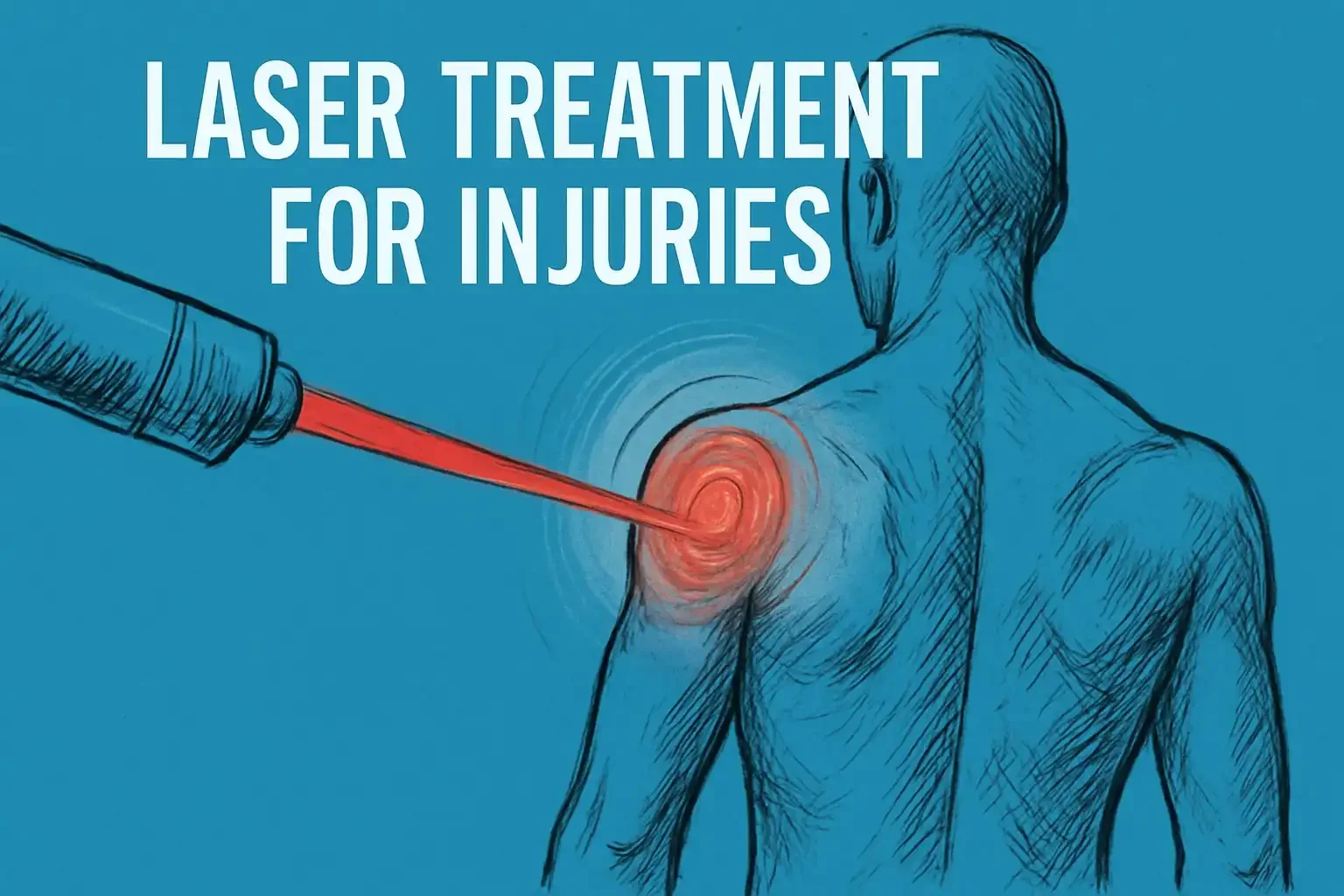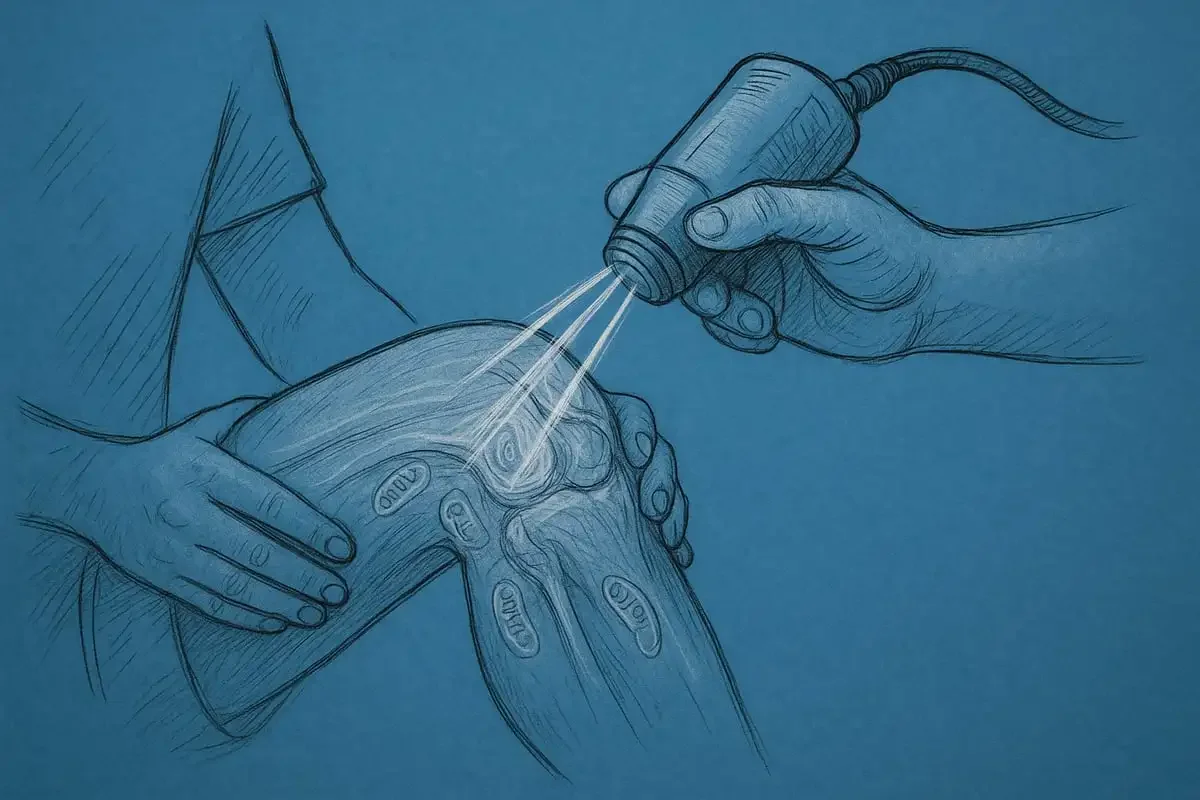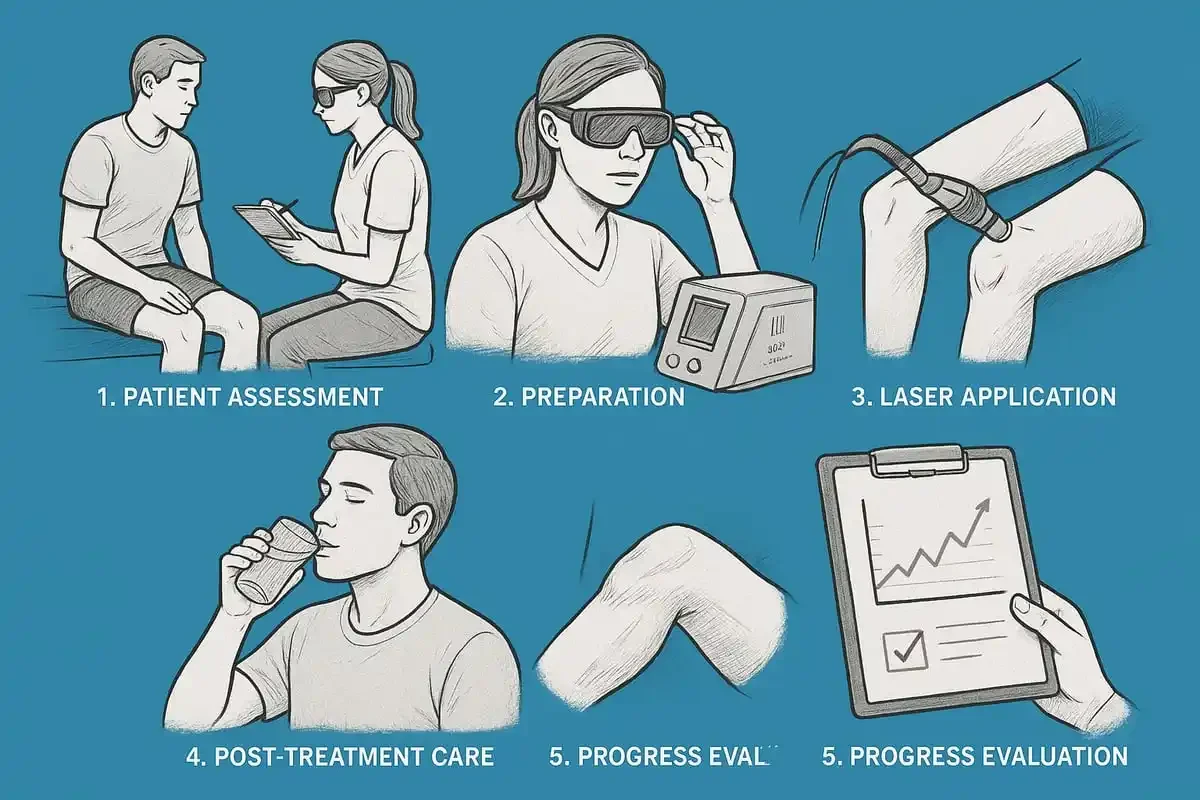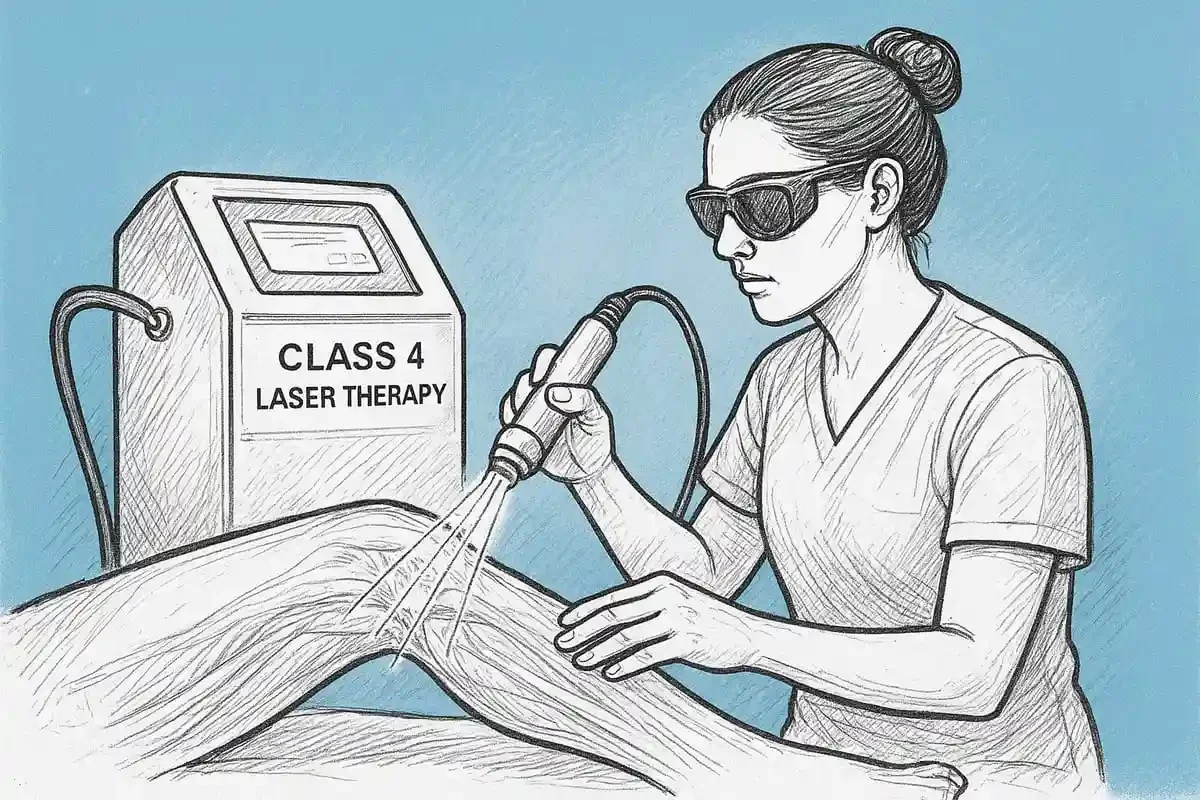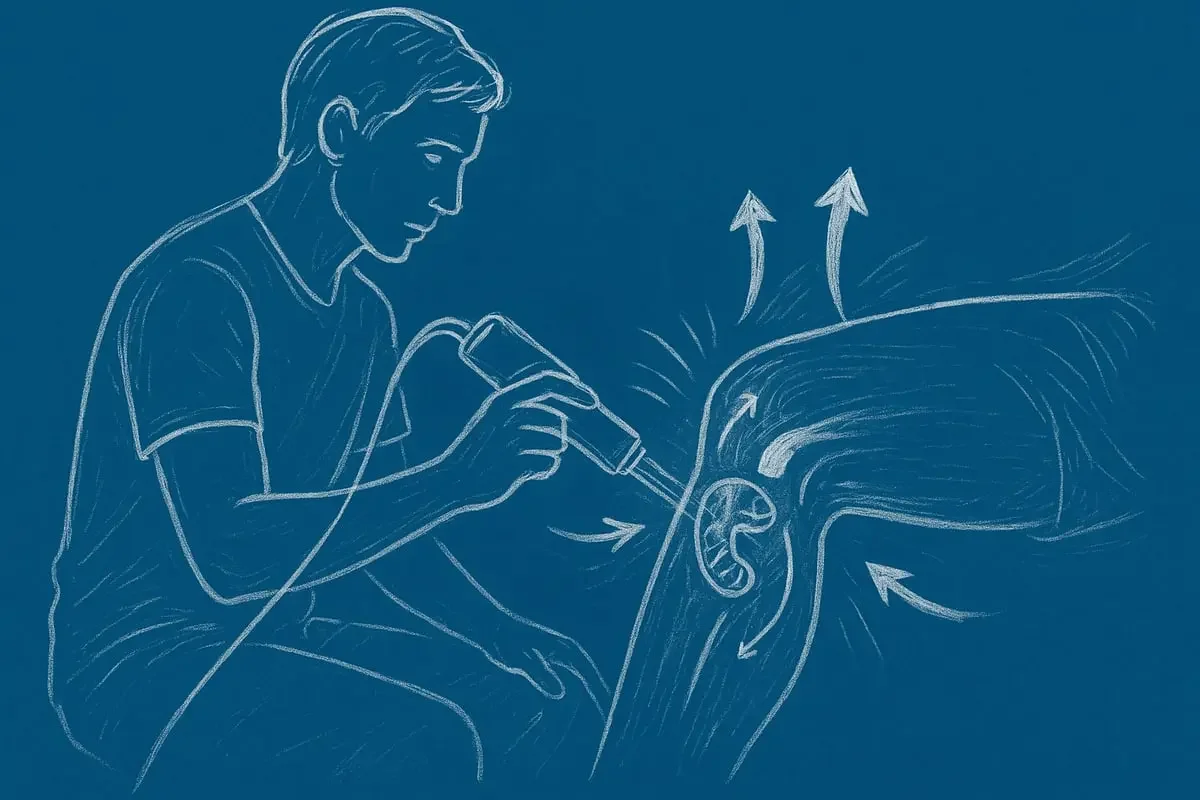Laser Treatment for Injuries: All You Need to Know
Discover the next big leap in recovery with laser treatment for injuries. This advanced therapy is changing how we heal musculoskeletal conditions, from joint pain to soft tissue damage.
Laser treatment for injuries harnesses light energy to speed up metabolic activity in your cells, driving faster healing and reducing pain. Imagine recovering from sprains, strains, or tendonitis in less time than ever before.
This guide unpacks the science, explains the step-by-step process, and explores how clinics like Mountain Health and Performance use Class 4 laser therapy for effective, patient-centered care.
Ready to learn how innovation can transform your recovery? Dive in and discover what laser therapy can do for you.
Understanding Laser Treatment for Musculoskeletal Injuries
Laser treatment for injuries has emerged as a leading innovation in musculoskeletal rehabilitation. This approach uses focused light energy to speed up healing and reduce pain for joint and soft tissue injuries. At Mountain Health and Performance, Class 4 laser therapy is a core part of their evidence-based care for active individuals and athletes.
What Is Laser Therapy?
Laser therapy uses concentrated light to treat a range of musculoskeletal injuries. Its evolution has been rapid with the development of Class 3 (low-level) and Class 4 (high-power) lasers. Class 3 devices are mainly used for superficial tissue, while Class 4 lasers penetrate deeper, making them ideal for joint and muscle injuries.
This therapy is approved by both the FDA and Health Canada for musculoskeletal use. Common conditions treated include sprains, strains, tendonitis, bursitis, and joint pain. Unlike ultrasound or shockwave therapy, laser treatment for injuries works at the cellular level without physical contact or discomfort.
To learn more about the science and applications, visit the Therapeutic laser treatment overview.
How Laser Therapy Works on Joint and Soft Tissue Injuries
The core mechanism behind laser treatment for injuries is called photobiomodulation. When the laser light is absorbed by cells, where it boosts the production of ATP, the cell’s energy currency. This extra energy supports faster repair of damaged tissues.
Laser therapy also increases local blood flow and enhances lymphatic drainage, which helps clear out inflammation and swelling. For joint and soft tissue injuries, this means less pain and quicker recovery. The treatment promotes collagen synthesis, supporting strong tissue repair and reducing the risk of scar tissue. At Mountain Health and Performance, Class 4 lasers are selected for their ability to reach deep structures and deliver optimal results with comparatively shorter treatment times.
Metabolic and Physiological Effects
Laser treatment for injuries accelerates the metabolic processes within injured tissues. By improving oxygenation and nutrient delivery, it helps tissues heal more efficiently. The therapy also modulates pain signals, leading to natural endorphin release and reduced discomfort.
On a cellular level, fibroblast activity is stimulated, which is critical for rebuilding soft tissue and restoring function. These physiological benefits make laser therapy a popular choice at Mountain Health and Performance, where patients seek faster recovery and lasting pain relief.
Benefits of Laser Therapy for Injury Recovery
Laser treatment for injuries is rapidly changing how musculoskeletal injuries are managed. Thanks to advances in technology and clinical practice, patients now have access to recovery options that target pain, inflammation, and tissue repair more efficiently than ever before.
Pain Relief and Anti-Inflammatory Effects
One of the most immediate benefits of laser treatment for injuries is rapid pain relief. By reducing inflammation in both acute and chronic cases, laser therapy helps patients experience noticeable comfort within just a few sessions. This is especially valuable for athletes or active individuals who want to return to activity as soon as possible.
Laser energy targets inflamed tissues, modulating pain signals and reducing swelling. According to a systematic review on the efficacy of Class IV laser in musculoskeletal pain, this therapy consistently outperforms placebo in both pain and function scores.
Patients often find they need less medication, which lowers the risk of side effects and dependency. The ability to manage pain non-invasively makes laser treatment for injuries a preferred option among those seeking a safe and effective solution.
Enhanced Healing and Tissue Regeneration
Laser treatment for injuries does more than ease pain, it accelerates the body’s metabolic and physiological processes. When light energy is absorbed by the mitochondria, ATP production increases, fueling cellular repair. This boost in metabolic activity leads to improved blood flow, oxygenation, and nutrient delivery to the affected area.
Tissue regeneration is also enhanced. Collagen synthesis is promoted, reducing the risk of scar tissue and supporting better long-term outcomes.
Patients at Mountain Health and Performance often report regaining range of motion and function sooner, allowing them to return to their routines with confidence. The tailored use of Class 4 laser therapy ensures deep tissue penetration for optimal healing.
Safety, Non-Invasiveness, and Patient Comfort
Safety is a cornerstone of laser treatment for injuries. The procedure does not involve needles, incisions, or anesthesia, which means there is no downtime following a session. Most patients experience only mild warmth or tingling, with minimal risk of adverse effects.
Class 4 laser therapy is suitable for various ages and conditions, making it accessible for both young athletes and older adults. Practitioners at Mountain Health and Performance combine laser therapy with other rehabilitation methods, ensuring a holistic and patient-centered approach.
High satisfaction rates and positive testimonials reflect the comfort and effectiveness of this therapy. By offering a non-invasive, evidence-based solution, laser treatment for injuries empowers patients to heal efficiently and safely.
Step-by-Step Guide: What to Expect During Laser Treatment
Curious about the process of laser treatment for injuries? Here’s a clear, step-by-step look at what you can expect during your recovery journey. Each session is designed to maximize healing for joint and soft tissue injuries, blending advanced technology with expert care.
Step 1: Initial Assessment and Diagnosis
Your first visit for laser treatment for injuries begins with a thorough assessment. The clinician reviews your medical history and performs a targeted physical exam to pinpoint the exact musculoskeletal injury.
This step ensures the treatment plan is tailored specifically to your joint or soft tissue injury. Accurate diagnosis is key to maximizing the metabolic benefits of laser therapy, setting the stage for optimal healing.
Step 2: Preparing for the Procedure
Before starting laser treatment for injuries, your practitioner will explain the entire process and answer any questions. You’ll be asked to provide informed consent, ensuring you understand the benefits and any potential risks.
Safety is a priority, so both patient and practitioner wear protective eyewear. The laser device is calibrated for your specific injury, targeting the right tissue depth for effective results.
Step 3: Laser Application Process
Key parameters like wavelength, power, and session duration are adjusted to suit your needs.
Here’s what a typical session looks like:
Parameter / Typical Range
Wavelength / 800–1100 nm
Power Output / 5–9 watts
Session Time / 5–15 minutes/area
Application / Moving
The laser is applied directly to the skin, and moved in slow, deliberate motions. You may feel gentle warmth as the energy penetrates tissues, stimulating cellular repair and enhancing metabolic activity. Clinics like Mountain Health and Performance use this advanced approach, often combining it with other therapies for the best outcomes. For more on clinical applications, see Shockwave and Class IV laser therapy.
Step 4: Immediate Post-Treatment Care
After each laser treatment for injuries session, your provider will briefly monitor you for any unexpected reactions, such as mild redness or tingling.
You’ll receive guidance on activity modification to avoid aggravating the injury. Staying hydrated and following any specific instructions help support the metabolic improvements triggered by the laser therapy, promoting continued healing.
Step 5: Treatment Course and Progress Evaluation
Most plans for laser treatment for injuries involve two to three sessions per week, with a typical course lasting 4 to 8 visits. Your clinician tracks your pain levels, mobility, and overall progress at each appointment.
Adjustments are made based on your healing milestones. Regular evaluations ensure the approach remains effective, especially for musculoskeletal injuries. Mountain Health and Performance customizes each program, using Class 4 laser technology as part of a larger, integrated rehabilitation plan.
Class 4 Laser Therapy: Advancements and Clinical Evidence
Breakthroughs in Class 4 laser therapy are reshaping how clinics approach laser treatment for injuries, especially in musculoskeletal care. In 2025, new devices and protocols are providing deeper, faster, and safer healing options for joint and soft tissue injuries.
Technological Innovations in 2025
Class 4 laser therapy devices have seen major upgrades this year. These systems now deliver higher power output, which allows for deeper tissue penetration and more effective laser treatment for injuries that affect muscles, tendons, and ligaments.
Key innovations include:
Customizable protocols that can be tailored to specific musculoskeletal injuries, from tendonitis to joint pain.
Mountain Health and Performance leverages these advancements to offer precise and effective care, ensuring each patient benefits from the latest technology. With these improvements, laser treatment for injuries is now more targeted and efficient than ever.
Limitations and Contraindications
While laser treatment for injuries is safe for most people, there are some important limitations. Class 4 lasers should never be used over cancerous lesions or the thyroid gland. Caution is necessary for pregnant patients, especially over the abdomen or lower back, and with those taking photosensitive medications.
Other contraindications include:
Active infections at the treatment site
Areas with pacemakers or metallic implants
Unexplained pain without a clear diagnosis
A thorough assessment at Mountain Health and Performance ensures that every patient receives the right care for their needs. Consulting a qualified provider is always recommended before starting laser treatment for injuries.
Laser Therapy at Mountain Health and Performance
For those seeking advanced solutions for musculoskeletal injuries, Mountain Health and Performance delivers expert care rooted in over 35 years of clinical experience. Their team specializes in laser treatment for injuries, utilizing Class 4 laser therapy as a cornerstone for joint and soft tissue recovery. By targeting cellular metabolism and tissue repair, their approach is grounded in the latest science of photobiomodulation, as detailed in Photobiomodulation for injury recovery.
Expert Care and Integrated Approach
The clinic’s practitioners blend deep expertise in sports injury and spinal rehabilitation with individualized treatment plans. Each patient receives a thorough assessment, ensuring laser treatment for injuries is tailored to their unique needs and recovery goals. The focus on Class 4 laser therapy allows for effective management of pain and inflammation, while supporting rapid tissue healing through optimized metabolic effects.
Comprehensive Rehabilitation Services
Mountain Health and Performance offers a full spectrum of rehabilitation options. Laser treatment for injuries is combined with chiropractic care, therapeutic massage, and shockwave therapy for a truly integrated recovery experience. The on-site gym and one-on-one rehab programs empower patients to regain strength and mobility in a supportive setting. Direct billing is available for insurance, ICBC, and WorkSafe BC claims, streamlining the process.
Why Choose Mountain Health and Performance?
Athletes and active individuals in North Vancouver trust Mountain Health and Performance for their commitment to results and patient satisfaction. The clinic features modern facilities, flexible scheduling, and a convenient location. With a proven track record in clinical outcomes, patients experience faster, safer recovery when choosing laser treatment for injuries at this leading center.
Risks, Side Effects, and Safety Considerations
Laser treatment for injuries is widely recognized for its safety profile, especially when administered by qualified professionals. Still, understanding potential risks and following best practices is crucial for optimal recovery. Here’s what you need to know about possible side effects, safety protocols, and when this treatment might not be appropriate.
Common and Rare Side Effects
Most people experience minimal side effects from laser treatment for injuries. Typically, mild redness, tingling, or a gentle warmth may develop at the treatment site. These sensations are temporary and usually resolve within seconds or minutes after the session.
On rare occasions, some individuals might notice a slight increase in symptoms or mild swelling after their first session. Allergic reactions are extremely uncommon. Clinical studies have not reported any long-term adverse effects when using Class 4 lasers for musculoskeletal injuries.
Mountain Health and Performance monitors each patient closely, ensuring any side effects are addressed promptly. Their team is trained to adapt treatment if needed, reducing risk and promoting a comfortable healing experience.
Safety Protocols and Best Practices
Safety is at the core of every laser treatment for injuries plan. Practitioners use certified, calibrated devices and undergo ongoing training to stay current with the latest protocols. Before starting, patients are screened for potential contraindications and educated on what to expect.
Protective eyewear is worn by both patient and practitioner during every session, and the treatment area is carefully prepared.
At Mountain Health and Performance, strict adherence to these standards ensures effective, reliable care. Regular device maintenance and professional oversight further minimize any risks during treatment.
If you’re ready to experience the benefits of cutting edge laser therapy for your injury recovery, you don’t have to go it alone. At Mountain Health and Performance, our experienced chiropractors use Class 4 laser technology alongside a personalized rehab plan to help you heal faster and get back to doing what you love. Whether you’re dealing with a sports injury or ongoing joint pain, we’re here to guide you every step of the way—plus, we make things easy with direct billing for insurance and ICBC claims. Take the next step toward recovery and Book with one of our chiropractors today.

